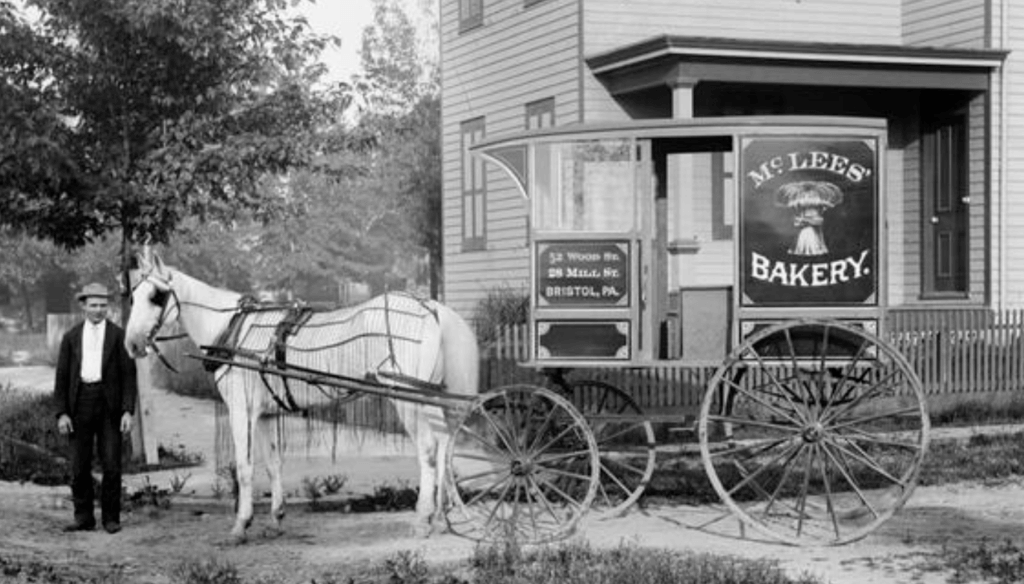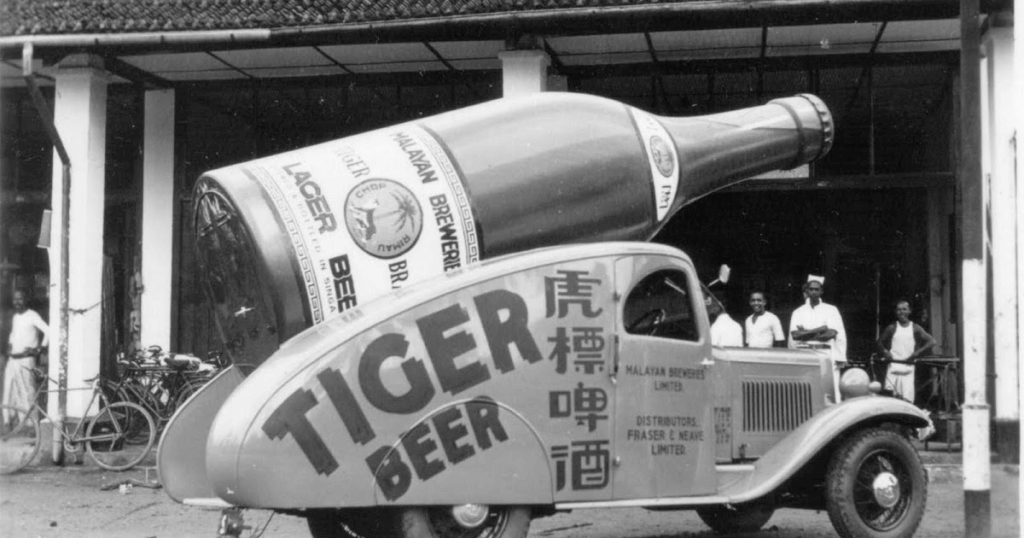By Rose Sugatan and Danielle Lisboa Fontes
A historical look at how mobile billboards have changed over time. Discover this transformation from the earliest forms of mobile advertising to today’s modern truck advertising.
Introduction
Mobile billboards are also known as truck advertising or mobile outdoor advertising. They have been used by companies for over a century to promote their products and services. Mobile billboards are essentially ads placed on a moving vehicle that can reach a large and diverse audience. This makes them highly effective and a valuable marketing tool for businesses of all sizes.
In this blog post, we will explore the fascinating evolution of these mobile billboards.! From their earliest forms in the late 1800s to the modern truck advertising we see today. We will discuss the decline and resurgence of mobile billboards throughout history, and the potential future of mobile advertising, and. Also the impact of new technologies and innovations. By the end of this post, you will have a better understanding of the history of mobile billboards in the world of advertising.
The Earliest Forms of Mobile Advertising
Mobile advertising in the early days was relatively simple compared to modern mobile billboards. They were limited to horse-drawn carriages with advertisements, which were mostly used to advertise circuses, carnivals, and other traveling shows. These horse-drawn carriages had posters and billboards mounted on them and would travel from location to location, displaying the advertisements. While they were limited in their reach and impact, they paved the way for the later development of mobile advertising.

Image Source: alamy.com
In the late 1800s, the first mobile billboards were introduced. These were also limited in their reach, but they marked an important step forward in the evolution of mobile advertising. They consisted of posters and billboards that were mounted on carts and moved from location to location. These carts were pulled by horses, and they were used to advertise a wide variety of products and services.
However, with the rise of the automobile in the early 20th century, mobile advertising took on a whole new dimension. Advertisers could now cover more ground and reach a larger audience than ever before. The first mobile billboards mounted on trucks were introduced in the 1920s, marking the advent of the mobile billboard industry. These billboards were large, brightly lit, and attention-grabbing, making them a popular choice for advertisers.
The trucks used for mobile billboards were typically old, repurposed vehicles that had been retrofitted with large, wooden billboards. They were driven around busy streets and popular areas, drawing the attention of passersby. These early mobile billboards were an effective way for advertisers to reach a large audience, and they were particularly popular during the Great Depression and World War II, when they provided a cost-effective way for companies to advertise.
The Golden Age of Mobile Advertising
The period between the 1930s and 1950s is often referred to as the “Golden Age” of mobile advertising, and it all began with the introduction of the first mobile billboards mounted on trucks in the 1920s. These early truck-mounted billboards were stationary, but the ability to move them from place to place greatly increased their impact and reach. Advertisers could now take their messages directly to potential customers, rather than waiting for customers to come to them. The mobility of the truck-mounted billboards allowed for advertising in areas that were previously difficult to reach, such as rural areas and small towns.

Image Source: wiki.sg
During this era, mobile billboards were a common sight on American highways and city streets, and advertisers embraced the new technology and used it to promote everything from consumer products to political campaigns. Mobile billboards were often adorned with colorful and eye-catching graphics, and they were frequently illuminated at night to maximize their visibility. In the 1930s, the development of illuminated mobile billboards took mobile advertising to a new level, with neon lights, incandescent bulbs, and even strobe lights used to make messages stand out even more. The use of lighting made the advertisements more visible at night and in low-light conditions, allowing advertisers to reach potential customers around the clock.
The 1940s and 1950s saw the addition of sound systems to mobile billboards, allowing for the use of music, voiceovers, and other audio effects to capture the attention of passersby. This added another dimension to the impact of mobile advertising, making it more engaging and memorable. Advertisers could now use a combination of visual and audio cues to create a more immersive and memorable experience for potential customers.
Image Source: torontoguardian.com
One of the most famous mobile advertising campaigns of the era was the “See America First” campaign, launched in the 1930s to promote tourism to national parks and other scenic destinations. The campaign featured a fleet of mobile billboards that traveled around the country, displaying breathtaking images of natural wonders and encouraging Americans to explore their own country. The Golden Age of mobile advertising was a time of great creativity and innovation in the industry, with mobile billboards becoming an integral part of the American landscape and shaping the way that products and services were marketed to consumers.
The combination of these technological advances helped to make automobile-based mobile advertising even more effective and impactful. The mobility of truck-mounted billboards, combined with the use of lighting and sound, created a powerful and attention-grabbing way for companies to promote their products and services. The rise of automobile-based mobile advertising during this time period laid the foundation for the mobile advertising industry that exists today.
The Decline of Mobile Advertising
The decline of the mobile billboard industry was also influenced by changes in American society during the post-World War II era. As the country became more suburbanized and automobile-oriented, people spent less time walking or driving through urban areas where mobile billboards were commonly found. Additionally, zoning regulations in many cities restricted the use of mobile billboards, making it more difficult for companies to use them as a means of advertising.
Furthermore, the emergence of new forms of advertising in the 1950s and 1960s, such as television, allowed advertisers to reach a much wider audience with greater impact than mobile billboards could achieve. Television advertising, in particular, revolutionized the advertising industry, allowing for the creation of visually compelling and emotionally resonant advertisements that could capture the attention of millions of people at once.
Image Source: ebay.com/egarth1
As a result of these changes, many companies shifted their advertising strategies away from mobile billboards and towards other forms of advertising. While some companies continued to use mobile billboards in certain contexts, such as promoting local events or businesses, the mobile billboard industry as a whole became less relevant in the advertising landscape.
The Modern Era of Truck Advertising
Truck advertising experienced a resurgence in the 1990s, which was attributed to the introduction of new technologies that allowed for more dynamic and interactive advertisements. These billboards revolutionized the industry by offering more dynamic and interactive advertisements that could be easily updated and targeted to specific audiences. Unlike traditional billboards, digital mobile billboards could display multiple ads on a rotating basis, allowing advertisers to reach different audiences at different times of day or in different locations.
The flexibility of truck advertising is one of its major advantages. Advertisers can choose to target specific demographics and locations, making it a cost-effective way to reach their desired audience. For instance, a company that targets a younger audience might choose to advertise near college campuses or sports arenas, while a company targeting an older audience might opt to advertise near retirement communities or healthcare centers.
Image Source: pinterest.com
Furthermore, truck advertising is highly visible, which is crucial in today’s world where people are bombarded with ads on their phones and computers. A well-designed and strategically placed mobile billboard can capture the attention of potential customers and create a lasting impression. As a result, truck advertising has become an attractive option for both small and large businesses looking to raise brand awareness and increase sales.
Future Trends in Mobile Advertising
As technology continues to evolve, the future of mobile advertising looks bright. The use of GPS and other technologies to target specific audiences will allow advertisers to reach their desired audience with pinpoint accuracy. By analyzing data from GPS and other sources, advertisers can determine where their target audience is most likely to be at a given time of day, and then place their mobile billboard in that location.
Another interesting area to watch is the potential impact of autonomous vehicles on mobile advertising. Self-driving cars and trucks could offer new opportunities for advertising, as they will provide a captive audience that is not occupied with driving. Advertisers could potentially create fully immersive experiences within the vehicle, utilizing virtual and augmented reality technology to engage passengers. These experiences could be tailored to the specific route, location, and time of day, creating highly personalized and targeted advertisements.
The 5G Revolution
In addition, the rise of 5G networks and faster mobile data speeds will allow for even more dynamic and interactive mobile advertising experiences. Advertisers will be able to deliver high-quality video content, augmented reality experiences, and more, all in real-time. This will enable them to create even more engaging and immersive advertisements that will capture the attention of potential customers.

Image Source: interestingengineering.com
Furthermore, the integration of mobile advertising with other forms of technology, such as voice assistants and smart home devices, will create new opportunities for advertisers to reach their target audience. For example, a user might ask their AI voice assistant for a recommendation on where to eat, and the assistant could provide a list of nearby restaurants along with a mobile billboard advertisement for a specific restaurant. The possibilities for integrated mobile advertising are endless, and it will be exciting to see how technology continues to shape this industry in the future.
Conclusion
In conclusion, mobile advertising has a long and fascinating history that dates back to the early 1900s. While the industry has seen its ups and downs, the introduction of new technologies such as digital mobile billboards and the use of GPS targeting has breathed new life into this form of advertising. The flexibility and visibility of truck advertising make it a powerful tool for reaching specific audiences and standing out in a crowded advertising landscape. As we look to the future, the potential impact of autonomous vehicles and other emerging technologies is sure to bring new opportunities and challenges to the world of mobile advertising. Overall, mobile advertising remains a dynamic and exciting area for advertisers and consumers alike.


